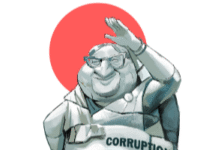Shamsuddin Ahmed
Plainly speaking, it is China’s growing military might and economic strength that brought the United States and India closer in a bid to halt its advance. President Barak Obama flew to India to the warm embrace of Prime Minister Narendra Modi and attended as chief guest in the Indian Republic Day celebrations on January 26. This demonstrated a stronger military and economic cooperation between the two countries.
India, one of the founders of the Non-aligned Movement moved away from NAM, entered into defence pact with the Soviet Union prior to 1971 war with Pakistan. And now it entered into nuclear deal and defence pact with the United States of America to deal with increasingly assertive China to the discomfort more of India than USA.
In cold war days, US leaders used to loath Indians. “We really slobbered over the old witch,” President Nixon had told his national security adviser Henry Kissinger after meeting with Indian Prime Minister Indira Gandhi in Washington before the 1971 war. “They (Indians) are slippery and treacherous,” added Nixon. Since then the world has undergone a sea change.
$4 billion loans, defence projects
President Obama during his three-day visit to Delhi committed $4 billion in terms of investment and loans and agreed to extend the 10-year defence pact with the hope India will be able to overcome hurdles that have long constrained its economy and prevented it from becoming an effective strategic counterweight to China. Extension of defence pact would allow deeper military to military engagement and increase maritime cooperation. It is also hoped that the defence partnership between the two countries will help forge security and stability in Asia and across the globe. U.S. Defense Secretary Chuck Hagel said they would explore joint projects on aircraft-carrier technology as well as jet engines.
Reciprocating President Obama’s gesture Narendra Modi said, “We are prepared to step forward firmly to accept the responsibility of the global partnership for our two countries and toward shaping the character for this century.”
His national security chief Shyam Saran said, “Neither India nor the U.S. would like to see a security landscape in Asia that’s dominated by China…This hhas become a very important relationship for India.”
Analyst Rahul Bedi viewed India’s goal is to develop military capabilities within the next two decades that would enable them to take on China. “India cannot do that on its own. So, we need somebody like America to hold our hand.”
In a commentary Chinese News Agency Xinhua said Mr. Obama’s visit to India “is more symbolic than pragmatic, given the long-standing division between the giants, which may be as huge as the distance between them.”
India, which lags behind China in terms of wealth, manufacturing sophistication and military technology, is deeply distrustful of Beijing, with which it has competing territorial claims. Delhi resents China’s aid-driven influence among its South Asian neighbors and its rising naval presence in the Indian Ocean.
Sino-Indian security issues
Last year Chinese soldiers entered two kilometers deep into Indian side of LOC in Ladhak border and stayed for weeks. It was the biggest and most serious of such confrontation in decades raising apprehension of repetition of 1962 war when India was badly bruised. Alarm bells also rang in Delhi after a Chinese navy attack submarine last year made a call at the port of Sri Lanka, the recipient of billions of dollars in Chinese loans for infrastructure construction projects. India is particularly concerned about China’s quiet quest for greater influence in the Indian Ocean, which has long been Delhi’s domain. The tankers that move through the Indian Ocean are critical for India’s oil supply. Any slowdown in the tanker traffic could cripple its economy.
The moot question is can India step up with assistance from USA as claimed by Narendra Modi. “If the Indian economy can’t get more traction, it will be hard for the country to have a more important role in the region or the world,” doubt US officials. This is a moment and everyone is looking for action.
India is struggling to revive its economy after a period of relatively low growth. Modi was elected last year after promising the country’s frustrated voters that he would go for development and industrialization to catch up with its neighbors in East Asia. But India’s capital Delhi still suffers from frequent disruptions in power supply. The country has few facilities capable of precision manufacturing and its thicket of bureaucratic red tape and rickety roads, railways and ports have discouraged investment.
HRs, Maoists, other problems
Obama ended the India visit with notably a sharp speech but in friendly language in front a gathering of young people. He asked the Indian leadership to address sectarian discrimination and conflict, human right violations, forced labour and abuse of women. Obama carefully avoided mentioning incidents of frequent anti-Muslim riots.
Modi was accused of killing of more than 1200 people, mostly Muslims, in Gujarat riot when he was the chief minister of the state, and for which he was denied US visa in 2005. Violations of human right are flagrant. Glaring example is Irom Sharmila of Manipur who is on fast unto death for more than 14 years. In custody she is kept alive by force feeding through the nose. Her non-violent protest was against killing of innocent people by the army in brutal suppression of militants fighting for independence from India.
Millions of deprived, neglected adivasis and low caste Hindus (untouchable) are subjected to sectarian discrimination in caste ridden Hindu society. This gave rise to Maoist armed struggle in 22 out of 29 states of India posing the gravest threat to the country’s internal security. All this are not unknown to the Americans. Obama’s advice for improving the situation will not go well with Modi’s Hindu Nationalist Bharatiya Janata Party. Since it came to power last year Hindu groups have converted a number of Muslims. They accepted Hinduism under threat.
Source: Weekly Holiday









